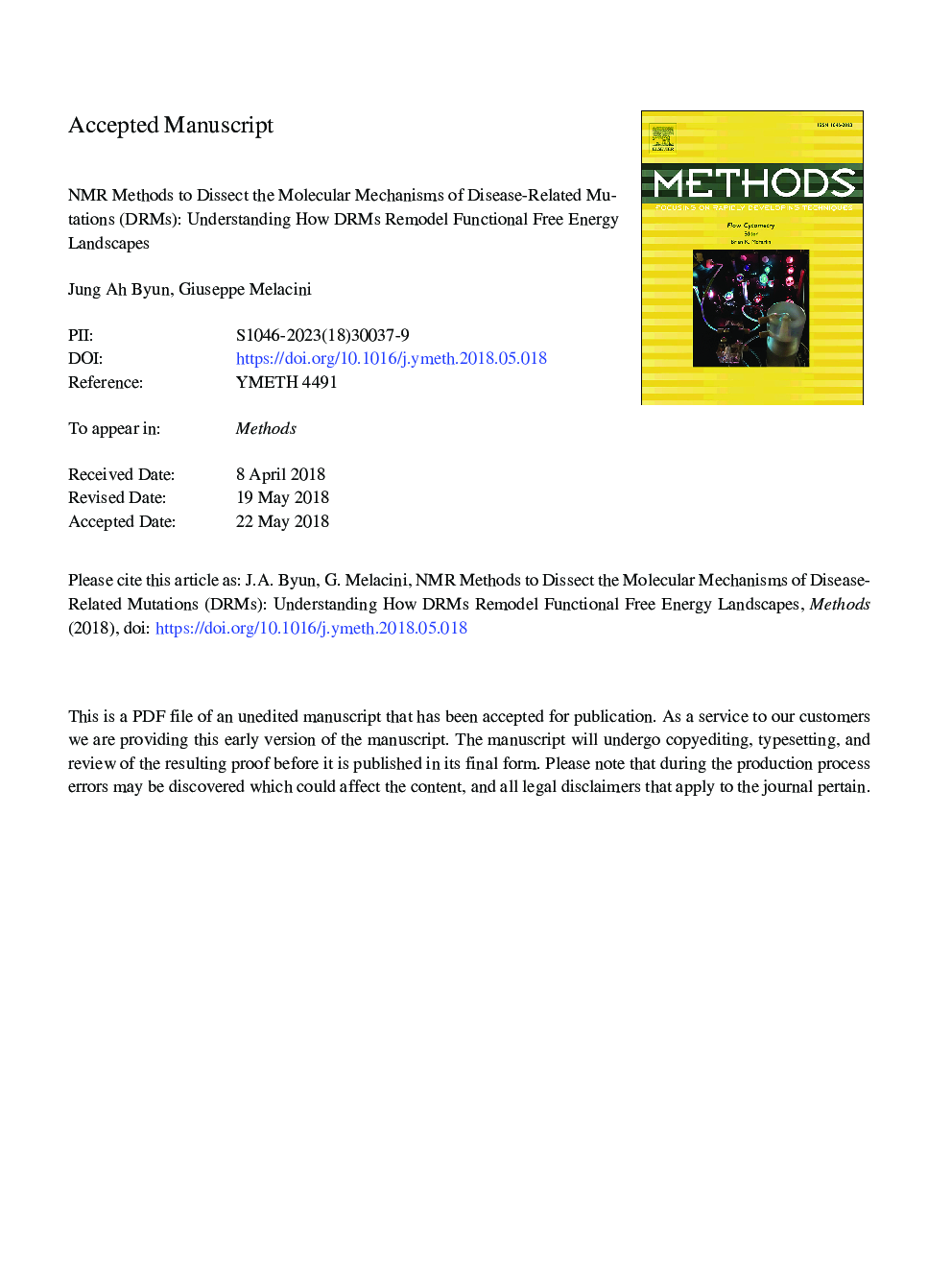| Article ID | Journal | Published Year | Pages | File Type |
|---|---|---|---|---|
| 8961928 | Methods | 2018 | 26 Pages |
Abstract
Elucidating the molecular mechanism of disease-related mutations (DRMs) is a critical first step towards understanding the etiology of genetic disorders. DRMs often modulate biological function by altering the free-energy landscape (FEL) of the protein associated with the mutated gene. FELs typically include ground, as well as excited, yet accessible and functionally relevant, states and DRMs may perturb both the thermodynamics and kinetics of the ground vs. excited and apo vs. holo transitions. NMR is ideally suited to map at atomic-resolution these DRM-induced FEL perturbations. Here, we discuss NMR methods that can elucidate how DRMs remodel regulatory FELs by focusing on a simple, but prototypical, four-state allosteric FEL model. The approaches include the CHEmical Shift Projection Analysis, NMR spin relaxation measurements, and NMR measurements of effector-binding thermodynamics and kinetics. Together, these complementary NMR measurements provide a valuable picture of how DRMs modulate distinct FEL attributes that are critical for dissecting the molecular mechanisms underlying pathological phenotypes.
Keywords
Related Topics
Life Sciences
Biochemistry, Genetics and Molecular Biology
Biochemistry
Authors
Jung Ah Byun, Giuseppe Melacini,
